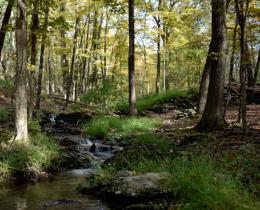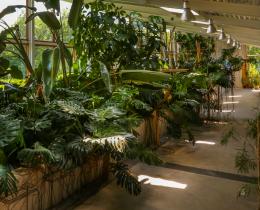1. Access to Safe, Nutritious Food
Urban agriculture is an important part of an ecologically sustainable and abundant food production system. According to the USDA, 15 percent of global food production takes place in urban environments and provides some food security for growing urban populations.
The World Health Organization defines food security as "access to sufficient, safe, nutritious food." In low income neighborhoods, urban gardens give people the opportunity to grow their own produce at a much lower cost than otherwise may be available. This access to fresh food can help remedy what are called food deserts—urban areas where access to quality food is scarce or nonexistent.
2. Green Space Is Good for Us
Despite the trend toward urbanization around the world (54% of the world’s population lives in urban areas in 2014, and by 2050 it's expected to be 66%), humans have lived in or close to rural environments for the overwhelming majority of our species' existence. On a biological level, we evolved in tandem with nature, and many recent studies illustrate the powerful benefits of spending time in leafy places.
Children need to spend time outside so their bodies and minds develop properly. Unstructured play in natural spaces helps children develop their sense of beauty and spirituality. Spending even a short time in nature helps us make less-impulsive decisions and helps us heal when we're injured. In Japan, doctors recognize how profound time in nature can be and prescribe it to their patients, a practice called forest bathing.
3. More Gardens Mean Less Crime
Urban gardens provide important noncommercial gathering places for neighborhood residents. Community gardens often become a focal point for people who need a place to get together for community organizing, cultural events, or just to see their neighbors.
It is also well-documented that urban gardens help prevent and lower crime. There is a marked reduction of violent and property crime when there is nearby greenery (provided it doesn’t obscure views); burglary and thefts drop precipitously when gardens replace vacant lots; and the greenery of gardens helps alleviate mental fatigue and stress, a precursor to violent behavior.
4. Welcome the Wildlife
It's already well-known that large urban parks provide important habitats for migrating birds. New York City’s Central Park and Prospect Park are examples of hubs for birdwatchers in the spring and autumn. It turns out that smaller green spaces provide important habitat for migratory birds, too.
One study, looking at birds passing through built-up areas in Ohio, found that even small areas of trees proved useful. Stephen Matthews, a post-doctorate researcher at Ohio State University when the study he coauthored was published in 2010, says, “The good news is that the birds in our study seemed to find enough food even in the smaller urban habitats to refuel and continue their journey.”
Though built to benefit a human community, it turns out the reach of urban gardens extends to the animal community as well, bringing food and pleasure to both.



